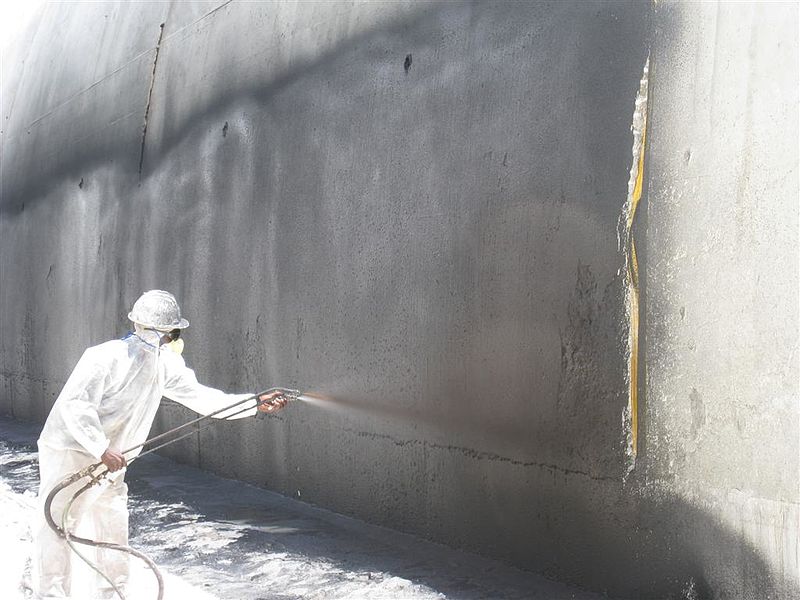The Essential Role of a Waterproofer
Water damage can wreak havoc on buildings and structures, leading to costly repairs and compromising their integrity. To combat this threat, waterproofer professionals play a crucial role in safeguarding structures against the damaging effects of water infiltration. This article delves into the responsibilities, techniques, and importance of a waterproofer in preserving the longevity of various constructions.
Understanding the Role
Waterproofers are skilled technicians responsible for applying protective measures to surfaces, preventing water from permeating into buildings. Their primary goal is to create barriers that shield structures from moisture, thereby mitigating potential damage caused by leaks, seepage, or other water-related issues.

Key Responsibilities
Waterproofers employ a range of techniques to execute their responsibilities effectively:
- Surface Inspection: Before initiating any waterproofing project, professionals conduct a thorough examination of the structure’s surfaces. This helps identify existing vulnerabilities and determine the most suitable waterproofing methods.
- Material Selection: Depending on the specific requirements and the type of structure, waterproofers choose appropriate materials such as sealants, membranes, and coatings to create an impermeable barrier.
- Application Techniques: The application of waterproofing materials requires precision and expertise. Waterproofers utilize various methods, including spraying, rolling, and brushing, to ensure thorough coverage and effectiveness.
- Repair and Maintenance: In addition to proactive waterproofing measures, professionals are often tasked with repairing existing damage and conducting routine maintenance to uphold the longevity of the protective layers.
- Collaboration: Waterproofers frequently collaborate with architects, engineers, and construction teams to integrate waterproofing seamlessly into the overall design and construction process.
Types of Waterproofing
Waterproofing methods vary based on the specific needs of a structure and the environment in which it is situated. Here are some common types of waterproofing:
1. Basement Waterproofing
Basements are particularly susceptible to water infiltration due to their below-ground position. Waterproofers employ techniques such as exterior excavation, interior sealants, and drainage systems to prevent water from entering basements.

2. Roof Waterproofing
Roofs are exposed to the elements and are prone to leaks. Waterproofers use specialized coatings, membranes, and sealants to create a watertight barrier on roofs, protecting the underlying structure from water damage.
3. Foundation Waterproofing
Foundations bear the weight of a structure and are vulnerable to water damage. Waterproofers implement methods like external membranes and drainage systems to ensure foundations remain dry and structurally sound.
The Importance of Waterproofing
Waterproofing is not merely a preventive measure; it is a fundamental aspect of ensuring the longevity and structural integrity of buildings. Here are key reasons why waterproofing is indispensable:
1. Structural Preservation
Water damage can compromise the strength and stability of a structure. By implementing effective waterproofing measures, professionals contribute to the preservation of a building’s structural integrity over time. For a waterproofing technician in liverpool click here.
2. Mold and Mildew Prevention
Moisture is a breeding ground for mold and mildew, which can pose health risks and cause unsightly damage. Waterproofing helps create a dry environment, preventing the growth of these harmful microorganisms.
3. Cost Savings
Investing in waterproofing upfront can save significant costs in the long run. Repairing water damage is often more expensive than implementing preventive measures, making waterproofing a cost-effective strategy for property owners.
4. Increased Property Value
Structures with a history of effective waterproofing are more attractive to potential buyers and tenants. A well-maintained, water-resistant building reflects positively on its overall quality and durability.
Conclusion
In conclusion, the role of a waterproofer is indispensable in the construction and maintenance of buildings. By employing various techniques and materials, waterproofers contribute to the resilience of structures against the detrimental effects of water. Understanding the importance of waterproofing and the diverse methods available is essential for architects, builders, and property owners seeking to protect their investments and ensure the longevity of their constructions.

